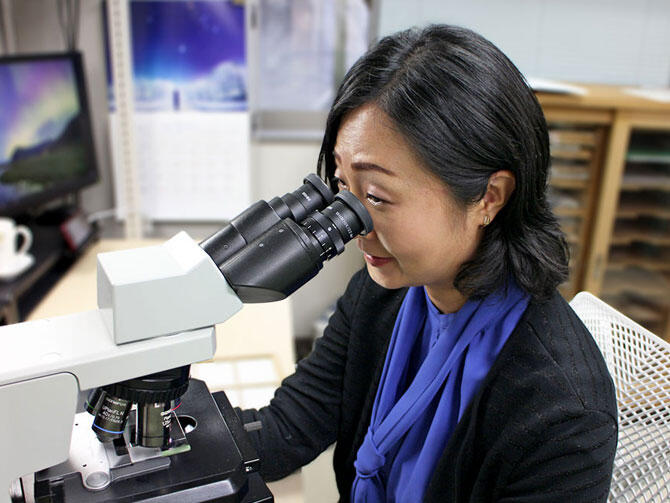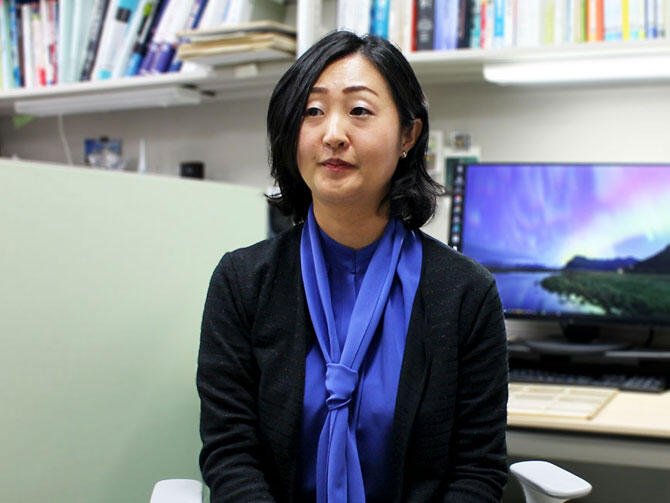
Rie Saito
Assistant Professor, Dept of Pathology
Interview
Dr Rie Saito obtained her MD degree from Niigata university and joined a neurology residency program at Toranomon Hospital before starting her PhD at Niigata University Graduate School of Medical and Dental Sciences. She studied neuropathology at BRI and is currently working as a neuropathologist in the Dept of Pathology Neuroscience.

What attracts you to do research at BRI?
BRI is the only research institute in Japan dedicated to studying the brain and neurological diseases, where basic and clinical departments work together. This privileged environment faciliates us to develop research that integrates basic and clinical skills. We also have a wide range of researchers with a high level of expertise, which allows us to take a multifaceted approach beyond the boundaries between laboratories. I have been able to develop a 3D pathological analysis of human autopsy samples applying the tissue clearing protocol established in basic research, in addition to the conventional 2D pathological analysis. Besides, Asahimachi campus, where BRI is located, is in an educational district with a mix of residential areas, providing a calm and comfortable environment for parenting. I think this is a significant aspect of achieving a good work-life balance.

What is the most interesting and challenging aspect of your current work or research?
Neuropathology is the medical specialty that deals with pathological diagnosis of the nervous system collected at autopsy or surgery. It is also important to ensure that valuable autopsy brains are stored properly and used for tomorrow's medical research. BRI is a hub for both clinical and basic research of the nervous system, so I find it a fascinating to work here where I can make new discoveries and meet people from many different fields every day. I am currently working on the pathology of cerebral small vessel disease. Despite the fact that abnormalities of cerebral small vessels are involved in various diseases, it has been difficult to capture dynamic and three-dimensional abnormalities of cerebral small vessels from pathological specimens. It is a difficult and challenging task but I am gradually gaining new knowledge through my clinical experience and the basic research expertise that BRI offers.
What kind of research would you like to do in the future?
As a physician engaged in research, I would like to develop my research based on the knowledge gained from the most advanced pathological techniques, so that the research findings can serve to clinical medicine. The degeneration of cerebral small vessels has been summarized and described as arteriolosclerosis pathologically, but analysis has shown that there are several types of morphology and development of the lesions. There are patients with vascular dementia along with stroke survivors experiencing movement disorders, but there is still no fundamental treatment that addresses the cerebral small vessels themselves. I hope to elucidate structural abnormalities in the cerebral microcirculation system, which will help us to understand the pathogenesis and develop therapeutic strategies.





